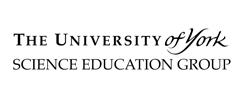- View more resources from this publisher
 University of York Science Education Group (UYSEG)
University of York Science Education Group (UYSEG)
TRUMP Part 2: Observational Properties of Astronomical Objects
Part 2 of the TRUMP Astrophysics resource package dealt with the observational properties of astronomical objects and was therefore concerned with the analysis and interpretation of observations.
Like Part 1 of the TRUMP package, this part contained study notes (self-study material for teachers), teaching notes and photocopiable student sheets to support a range of student activities.
[b]Contents of Teacher’s guide[/b]
INTRODUCTION TO PART 2
STUDY NOTES
Introduction
1.1 Carriers of astronomical information
2 Brightness and distance
2.1 Flux
2.2 Luminosity and flux
2.3 The magnitude scale
2.4 Distance
Summary of Section 2
3 Spectra and temperature
3.1 Stars as ideal thermal radiators
3.2 The physics of ideal thermal radiators
3.3 Line spectra
3.4 Stellar spectral types
Summary of Section 3
4 Using astronomical observations
4.1 The luminosity of the Sun
4.2 Hertzsprung-Russell diagrams
Summary of Section 4
Self-assessment questions
ITQ answers and comments
SAQ answers and comments
Glossary
TEACHING NOTES
Introduction
1.1 Observational astronomy
1.2 Terminology and units
2 Brightness and distance
Student learning outcomes
2.1 Observing light sources
2.2 Luminosity and flux
2.3 The magnitude scale
2.4 Distance
3 Spectra and temperature
Student learning outcomes
3.1 Astronomical broad-band spectra
3.2 The physics of ideal thermal radiators
3.3 Line spectra
3.4 Stellar spectral types
4 Using astronomical observations
Student learning outcomes
4.1 The luminosity of the Sun
4.2 Hertzsprung-Russell diagrams
Resources
Books
Other resources
Show health and safety information
Please be aware that resources have been published on the website in the form that they were originally supplied. This means that procedures reflect general practice and standards applicable at the time resources were produced and cannot be assumed to be acceptable today. Website users are fully responsible for ensuring that any activity, including practical work, which they carry out is in accordance with current regulations related to health and safety and that an appropriate risk assessment has been carried out.




